Barrel Velocity
Sat Apr 30, 2011 7:19 pm
When building a rifle determining the barrel length is an important and difficult decision to make. I am a man of science, I observe and collect data and after evaluating the data I can make a decision. Or so I like to think! When determining barrel length as much as we want to use this one rifle for everything, we must choose a primary purpose. Once a primary purpose is chosen, there can be a secondary purpose but we may have to compromise on the accomplishment of this secondary purpose. We live in a wonderful age of technology, a guy can buy a rifle off the shelf, a PDA with a ballistic computer program, match grade ammunition, and bang! He is shooting targets at 1000 yards! Right? Because of this technology era we live in, we can make a decision regarding barrel length before the barrel is cut. There are many ballistics programs out there that can help aid in figuring out barrel velocity. Using these programs we can input our components and barrel lengths and determine velocity and percentage of powder burned, with the intent that maximum powder burned achieves maximum velocity.
This experiment is really why I got into building rifles. I was tired of hearing reviews of rifles that describe how a rifle looks. I don’t care how a rifle looks; I want to know its strengths and weaknesses. Unfortunately many reviews are motivated by sales and don’t intend on teaching the consumer anything.
The purpose of this test was to find out how the barrel length affects velocity. There are several other velocity tests available, I had the opportunity to perform the test. Firing 5-shot strings of 168 grain Federal Gold Medal match ammo collected the data. The test rifle was my M40A1. I wanted to go down to 16” because that is the minimum rifle length.
Test conducted 6/17/09 at 11:00 am Temperature 62 degrees
24”barrel average velocity 2696 FPS
22”barrel average velocity 2663 FPS
20”barrel average velocity 2621 FPS
18”barrel average velocity 2566 FPS
16”barrel average velocity 2524 FPS
The rule of thumb I’ve heard was that in a .308 you will lose 25 FPS per inch you cut off. As you see, that is not the case. Velocity from 24 inches to 20 inches lost was 75 FPS for an average of 18.75 FPS per inch.
But velocity lost from 20 inches to 18 inches was 55 FPS or 27.5 FPS per inch.
The standard argument for barrel length is longer is better. Long or short each has an advantage or disadvantage. For the advantage of more velocity you have a long, unwieldy rifle. A short barrel may have the advantage of urban shooting or fitting in the truck of a patrol car, but my have slightly less velocity. As you can see up above there is not a huge loss of velocity from 24 to 20 inches.

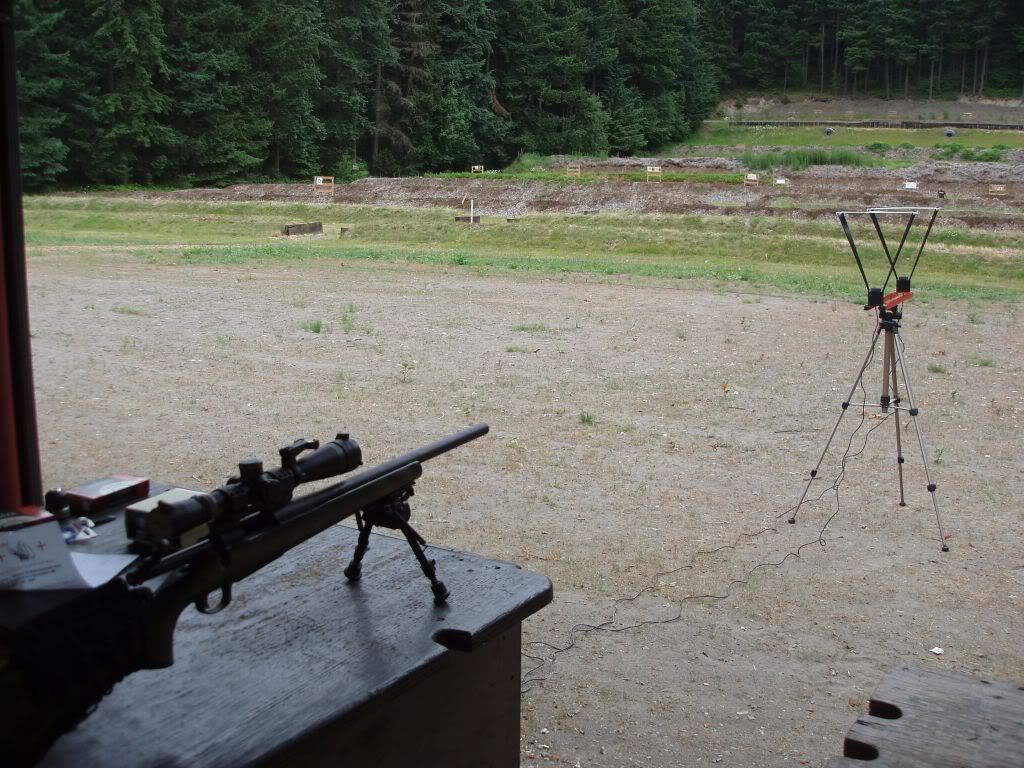
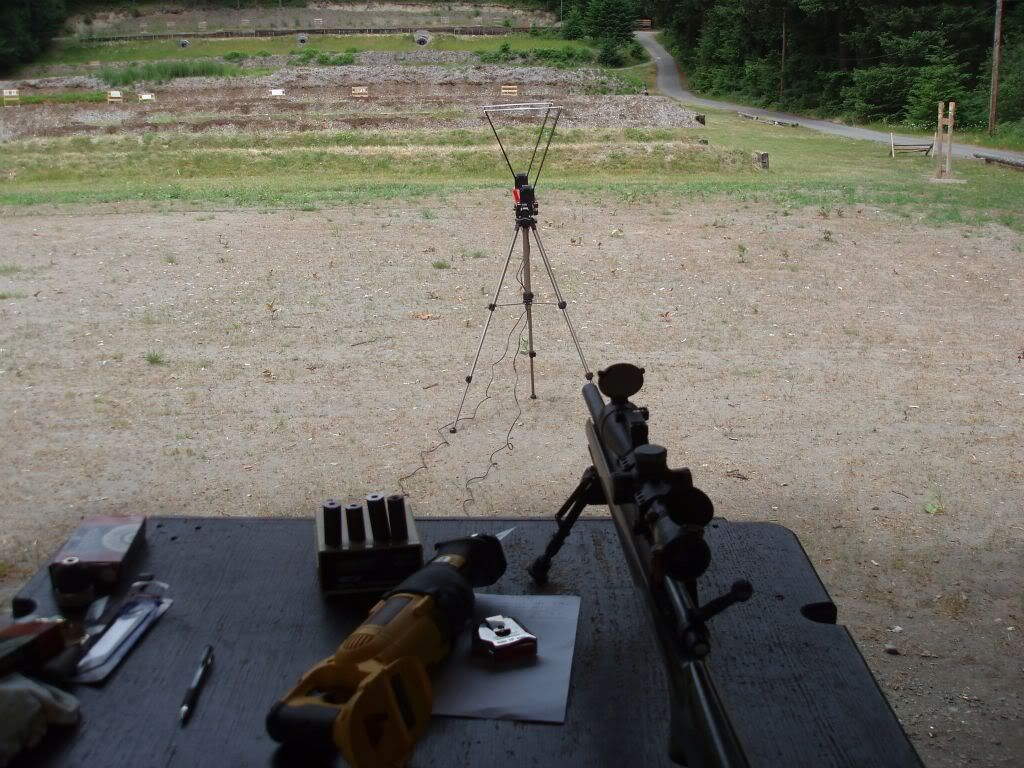
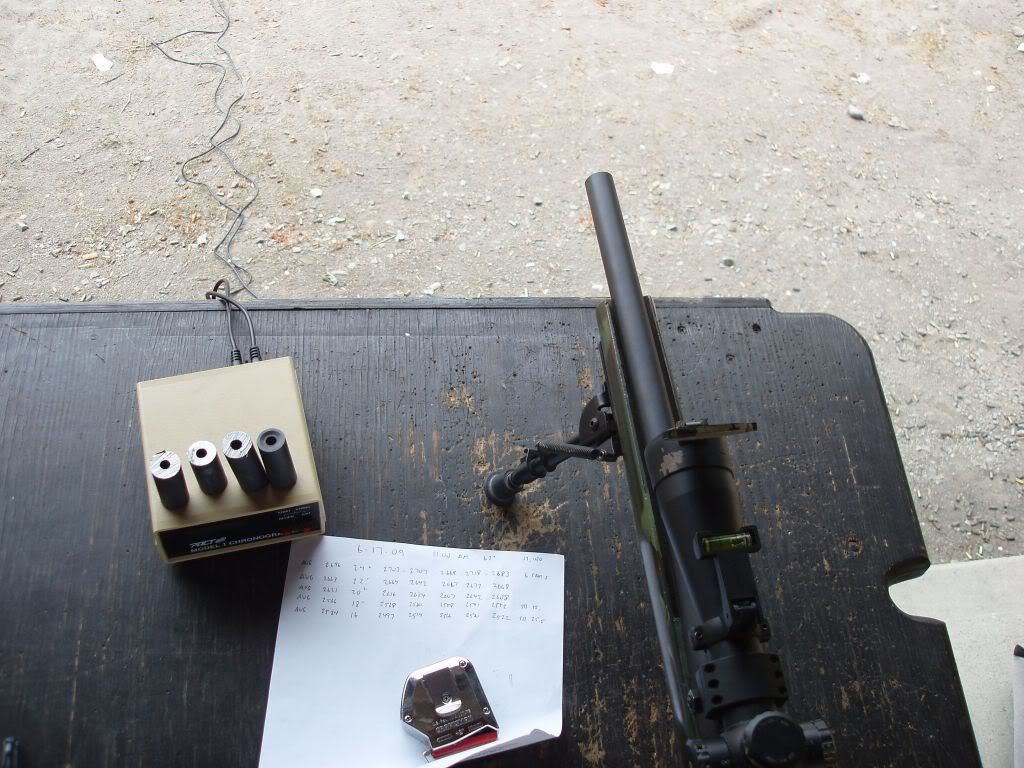
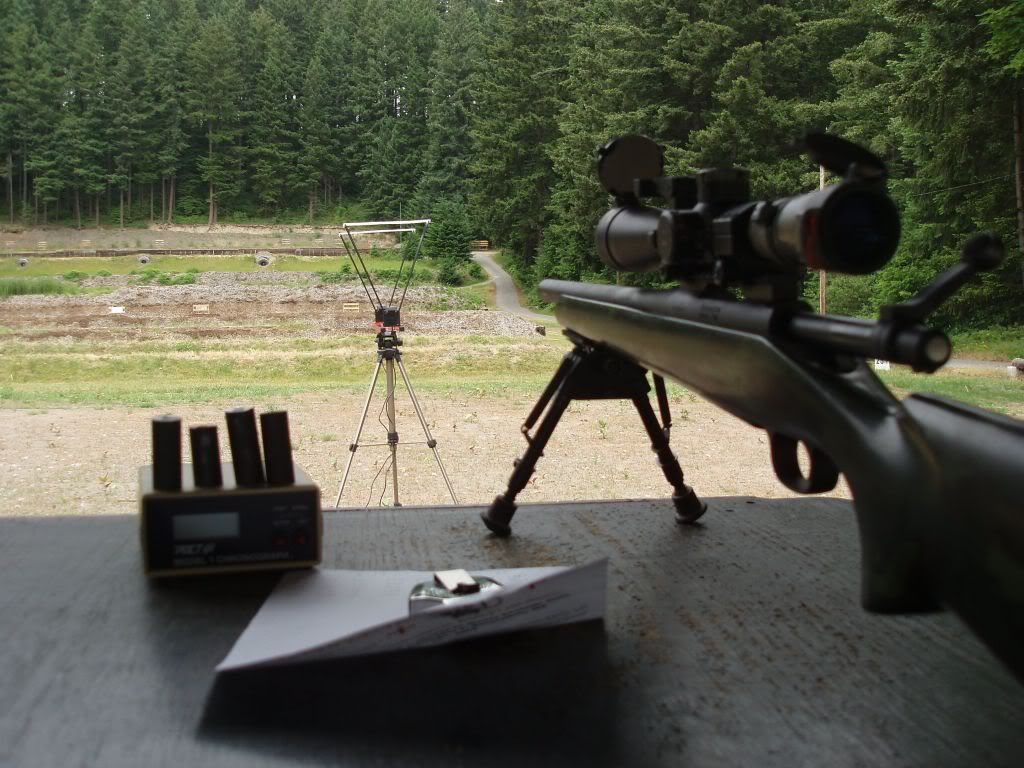
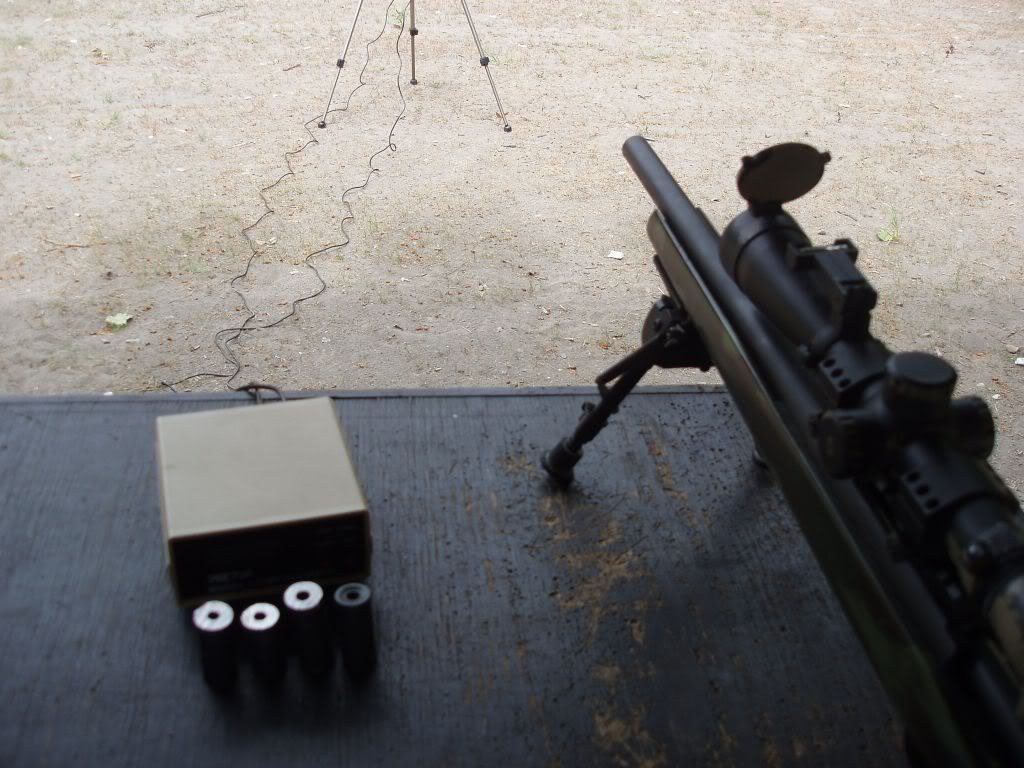
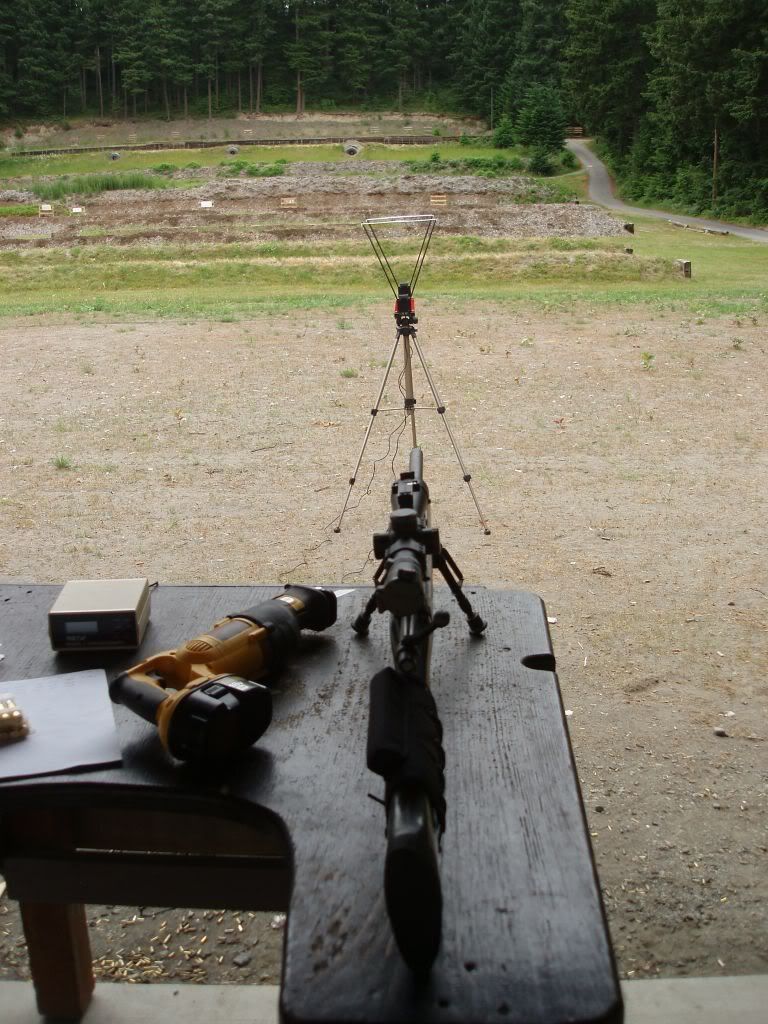
Please note that if you choose to conduct a test of your own, don't worry if the guys on the firing line look at you like you are crazy when you cut the barrel off with a sawzall. I'm used to it, people looking at me crazy that is.
This experiment is really why I got into building rifles. I was tired of hearing reviews of rifles that describe how a rifle looks. I don’t care how a rifle looks; I want to know its strengths and weaknesses. Unfortunately many reviews are motivated by sales and don’t intend on teaching the consumer anything.
The purpose of this test was to find out how the barrel length affects velocity. There are several other velocity tests available, I had the opportunity to perform the test. Firing 5-shot strings of 168 grain Federal Gold Medal match ammo collected the data. The test rifle was my M40A1. I wanted to go down to 16” because that is the minimum rifle length.
Test conducted 6/17/09 at 11:00 am Temperature 62 degrees
24”barrel average velocity 2696 FPS
22”barrel average velocity 2663 FPS
20”barrel average velocity 2621 FPS
18”barrel average velocity 2566 FPS
16”barrel average velocity 2524 FPS
The rule of thumb I’ve heard was that in a .308 you will lose 25 FPS per inch you cut off. As you see, that is not the case. Velocity from 24 inches to 20 inches lost was 75 FPS for an average of 18.75 FPS per inch.
But velocity lost from 20 inches to 18 inches was 55 FPS or 27.5 FPS per inch.
The standard argument for barrel length is longer is better. Long or short each has an advantage or disadvantage. For the advantage of more velocity you have a long, unwieldy rifle. A short barrel may have the advantage of urban shooting or fitting in the truck of a patrol car, but my have slightly less velocity. As you can see up above there is not a huge loss of velocity from 24 to 20 inches.







Please note that if you choose to conduct a test of your own, don't worry if the guys on the firing line look at you like you are crazy when you cut the barrel off with a sawzall. I'm used to it, people looking at me crazy that is.
Re: Barrel Velocity
Sat Apr 30, 2011 7:38 pm
holy crap!! I was like.. pfft, why is there a sawzall in the pic.. Then I was like, wha?? What are those metal slugs on the scale.. Then I was like whooooaaa... when I put it all together. Now? I am like sweeeet.
Barrel Velocity
Sat Apr 30, 2011 9:09 pm
LOL, Dan....
Tom, I assume that your results are dependent on the type of powder used; I'm guessing that it was mostly burned by the time the bullet reached the 20-inch mark. A powder with a different burn rate would yield different results. Is this true? If so, then I suppose you'd have to figure out your favorite powder or ammo type, and then determine barrel length from there.
Cool stuff, man. Thanks for sharing!
Tom, I assume that your results are dependent on the type of powder used; I'm guessing that it was mostly burned by the time the bullet reached the 20-inch mark. A powder with a different burn rate would yield different results. Is this true? If so, then I suppose you'd have to figure out your favorite powder or ammo type, and then determine barrel length from there.
Cool stuff, man. Thanks for sharing!
Re: Barrel Velocity
Sun May 01, 2011 9:57 am
Steve, you are correct any change in components will cause changes in velocity. I used 168 gr. match bullets for my test 175 gr. match or different powders will affect the velocity. My true intention was to show that not much velocity is lost. When dealing with a .308 rifle factory barrels come in 24 inch and 20 inch configurations. If you buy a 20 inch barrel, I'm sure you can get the job done with about 75 fps less than a 24 inch barrel. Also, I could argue how accurate a ballistics program models velocity. My argument would be that a calculated velocity will vary from actual velocity in the field, due to atmospheric conditions.
Re: Barrel Velocity
Sun May 01, 2011 11:09 am
Give this man a round of applause!


























































Re: Barrel Velocity
Sun May 01, 2011 11:15 am
Filthy shit, Tom. 

Re: Barrel Velocity
Sun May 01, 2011 12:07 pm
Thanks for the follow-up. Great stuff, Tom. 

Re: Barrel Velocity
Tue May 15, 2012 11:23 pm
In looking up 308 barrel length vs velocity comparisons. Everyone knows that diferent powders and bullet weights are going to play a huge part in this equation. maybe this question is to basic for this discusion but i know how to read a box to find bullet weight but is the fast or slow burn rate of a given factory load listed somewhere? Or is this just a try alot of differant ammo to figure it out scenario. I hope that question was clear awesome write up by the way.
Re: Barrel Velocity
Tue May 15, 2012 11:49 pm
Interesting research, however, one might argue that powder burning profile would actually dictate the relationship between barrel length and the muzzle velocity. For a slower-burning powder the loss would be more, for a faster, less. So, you need to repeat your experiement for a few different powders :-).
Speaking of which, is your chronograph reliable? What is your model? What standard deviations are you getting on your 5-round strings? I have just started using my Chrony F1, and it seems to be quite random (and the numbers it produces are kinda different from the numbers in the manual)...
Speaking of which, is your chronograph reliable? What is your model? What standard deviations are you getting on your 5-round strings? I have just started using my Chrony F1, and it seems to be quite random (and the numbers it produces are kinda different from the numbers in the manual)...
Re: Barrel Velocity
Wed May 16, 2012 7:44 am
solyanik wrote:Interesting research, however, one might argue that powder burning profile would actually dictate the relationship between barrel length and the muzzle velocity. For a slower-burning powder the loss would be more, for a faster, less. So, you need to repeat your experiement for a few different powders :-).
Speaking of which, is your chronograph reliable? What is your model? What standard deviations are you getting on your 5-round strings? I have just started using my Chrony F1, and it seems to be quite random (and the numbers it produces are kinda different from the numbers in the manual)...
It appears that his Chrony is a Pact. When comparing that make to a Shooting Chrony it's like using a tape measure to measure case length versus using a caliper. The Pact is head and shoulders more accurate than the F1. The randomness of your results are a prime example. I have a Pact XP Pro that yields numbers that are extremely close to my internal ballistics program produces.
As for the analysis of barrel length vs speed, Were the shortened barrels re-crowned after each cut? Were they truly square?
Another factor, that is really more important than pure speed, is the "barrel timing". Timing of the bullet exit from the muzzle when the barrel is in an optimum state. At the same place of it's natural oscillations when subjected to the shock wave of the burning powder and according to some "men of science", when the muzzle of the barrel is in a perfect circle. There are those that claim the barrel muzzle will vary from a circle to an oval shape at various times during the barrel oscillation.
The trick is to find that sweet spot where velocity, barrel "position", and muzzle shape, are all at that optimum state.
If one remains "velocity focused" they'll never find the real accuracy potential of their firearm.
Here's some great reading on the subject:
http://optimalchargeweight.embarqspace.com/
http://www.desertsharpshooters.com/manuals/incredload.pdf
http://www.shootingsoftware.com/barrel.htm
http://www.the-long-family.com/OBT_paper.htm
Some barrels will perform better when shortened but they are typically those lighter weight "buggy whip" barrels that were popular among hunters for years.
Tactical barrels should be cut to the length that is best for the task at hand. Short if in CQB and longer if a "reach out and touch someone" application. Once one decides on the barrel length they need, then it's a matter of finding the right velocity. I suggest reading the Incremental load development process described in the desertsharpshooters article. It gets to the desired load quicker than all the others.
As long as the bullet remains supersonic at the desired range you have enough velocity. I place accuracy as a priority over speed. A fast bullet that just whizzes by your target is worthless. A bullet traveling a few hundred feet per second slower, but hits dead center is far more effective regardless of your type of "use".
There is no one perfect barrel length but there is usually only one "load" that brings out the potential of any given length.